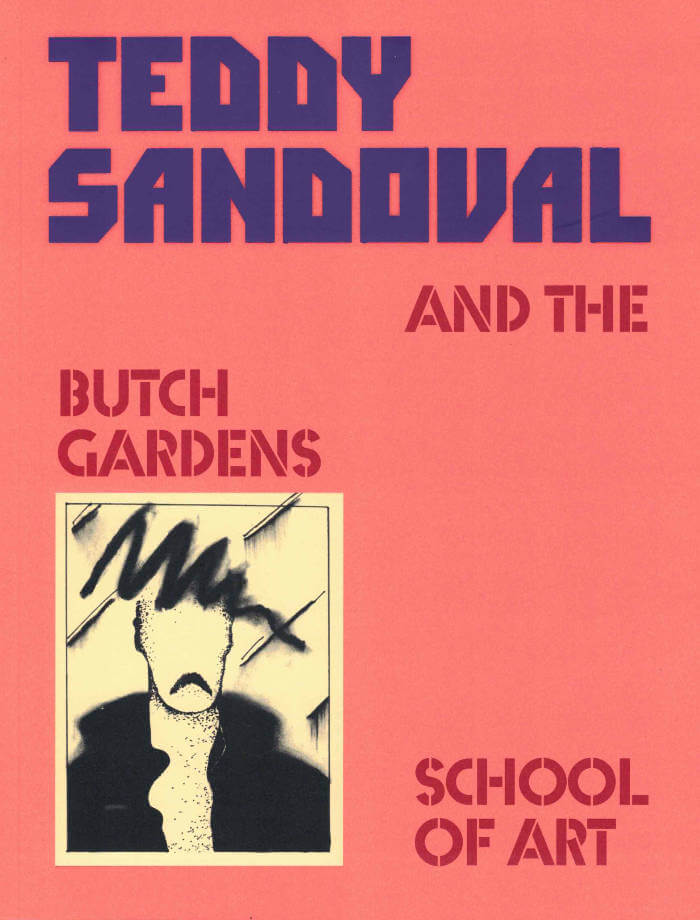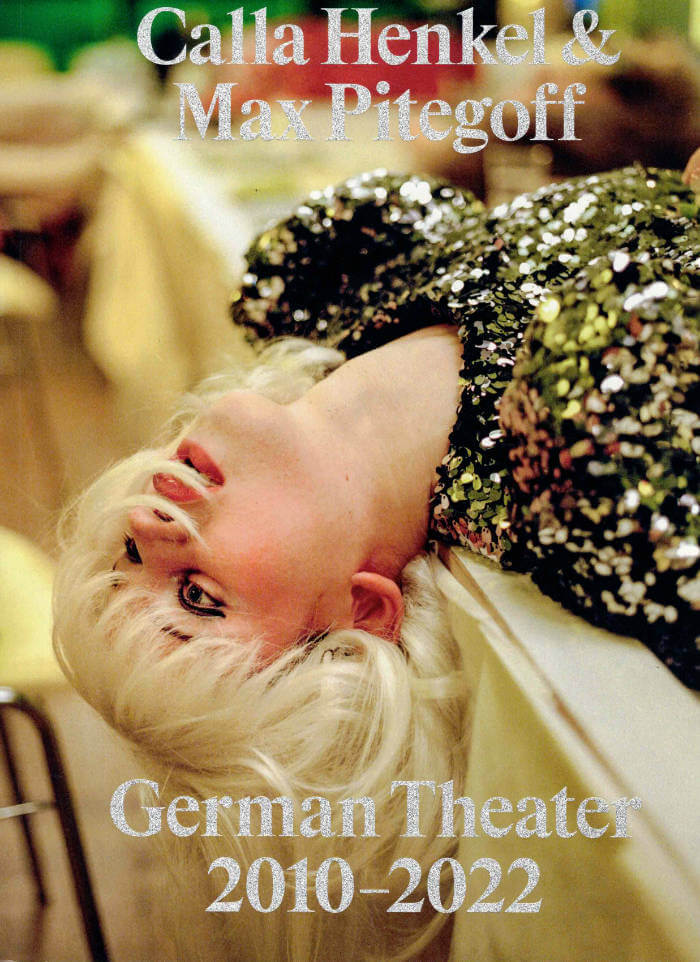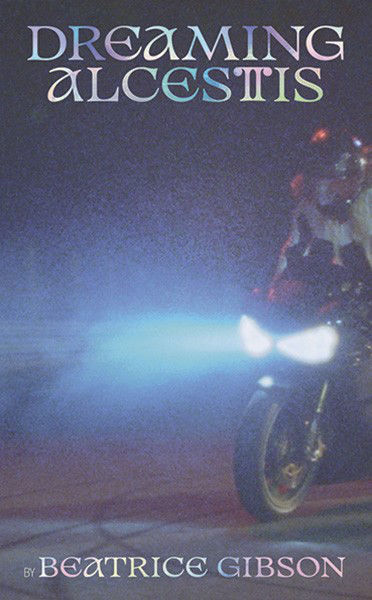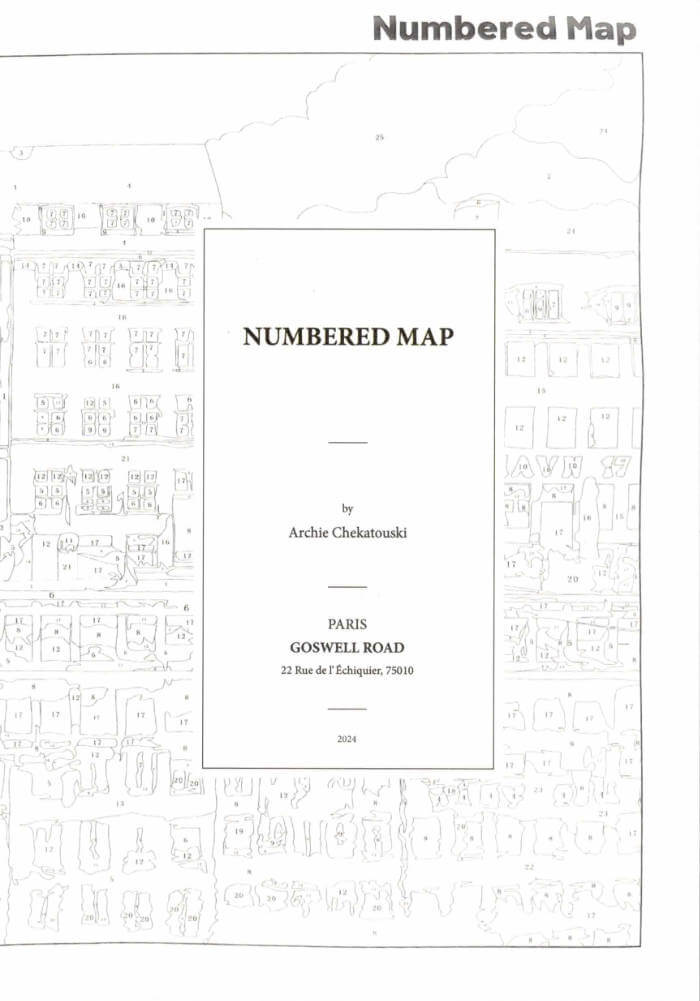Artists' Books
Artists' Books

as the non-world falls away
as the non-world falls away is set of fragmented poetic compositions, created through iPhone scans of the artists notebook that have then been worked over digitally, testing the boundaries between image and text in a palimpsestic manner
WITHOUT THE E is a series of pamphlets responding to a presence or an absence felt in contemporary digital culture.

Drafts
A weaving draft is a kind of notation for planning and sharing woven textil structures. The threading, along the top, shows how the warp is threaded through the heddles and frames; the treadling, along the right-hand side, show the order in which the treadles of the loom are to be pressed; and the tie-up, in the upper right-hand corner, shows how each treadle interacts with the loom’ frames. The drawdown, in the lower left, shows whether the warp or weft will be on top at any particular intersection of threads—thereby providing a “preview” of the completed textile. Often a draft diagram will indicate the intended color of the warp and weft threads, and the drawdown will show the completed textile’s color patterns. In “Drafts,” Allison uses letters instead of colors, melding digital weaving with writing.
WITHOUT THE E is a series of pamphlets responding to a presence or an absence felt in contemporary digital culture.

Vostok
The theme was built around the idiom “VOSTOK”, the title given by Stéphanie Pécourt to her cycle dedicated to performative semantics, in which carte-blanches signed by guest curators at the Centre Wallonie-Bruxelles are deployed. Buried beneath several kilometers of ice, Lake Vostok acts as an invitation that both fascinates and refuses us. This sub-glacial lake on the edge of Antarctica, the largest identified, becomes the mirror-object of our desires and fears for the abyssal depths. The title of the program, Now I am a Lake, is taken from Sylvia Plath's poem Mirror (1961).
This booklet includes the scripts and texts of the performances, translated exclusively into French for the occasion, as well as images from the videos presented at the eponymous event. The compilation focuses on Sylvia Plath's poem Mirror, and includes an introductory text by curator Pauline Hatzigeorgiou.
edited by SB34
graphic design by Raphaëlle Serres / Solid Éditons
Contributions by Signe Frederiksen, Pauline Hatzigeorgiou, Margaux Schwarz, Hagar Tenenbaum, Sylvia Plath & Eleanor Ivory Weber

Ezio Gribaudo - The Weight of the Concrete
Lilou Vidal, Tom Engels and 1 more
The Weight of the Concrete explores the legacy of the Turinese artist and publisher Ezio Gribaudo (1929–2022), examining his multifaceted oeuvre at the confluence of image and language. This publication, named after Il Peso del Concreto (1968)—a seminal work that featured Gribaudo’s early graphic creations alongside an anthology of concrete poetry edited by the poet Adriano Spatola (1941–88)—places Gribaudo’s work in conversation with approximately forty artists and poets from different generations, all of whom similarly engage with explorations of text, form, and visual expression.
Reflecting the editorial premise of Il Peso del Concreto, The Weight of the Concrete revisits the influential anthology, including archive material that documents its production, and reimagines it, pairing Gribaudo’s graphic work with a new selection of historical and contemporary concrete and experimental poetry.
At the heart of the volume is Gribaudo’s emblematic Logogrifi series, developed from the 1960s onward. The Logogrifi reveal his deep engagement with the art of bookmaking and fascination with industrial printing processes, relief matrices, typefaces, and language games.
In this new edition, the editors take the opportunity to revisit Gribaudo’s pioneering work, examining previously overlooked dimensions—gendered, geographical, and technological—and exploring contemporary associations beyond the original context. The book also includes essays that elucidate the poetic and political interplay between image, language, and materiality.
This publication is released following Ezio Gribaudo – The Weight of the Concrete, an exhibition held at the Grazer Kunstverein in Graz, Austria (2023–24), and at the Museion—Museum of Modern and Contemporary Art in Bolzano-Bozen, Italy (2024).
Edited by Tom Engels and Lilou Vidal
Published by Axis Axis and Grazer Kunstverein
Contributions by Anni Albers, Mirella Bentivoglio, Tomaso Binga, Irma Blank, Al Cartio, Paula Claire, CAConrad, Natalie Czech, Betty Danon, Constance DeJong, Mirtha Dermisache, Johanna Drucker, Bryana Fritz, Ilse Garnier, Liliane Giraudon, Susan Howe, Alison Knowles, Katalin Ladik, Liliane Lijn, Hanne Lippard, Sara Magenheimer, Françoise Mairey, Nadia Marcus, Giulia Niccolai, Alice Notley, Ewa Partum, sadé powell, N. H. Pritchard, Cia Rinne, Neide Dias de Sá, Giovanna Sandri, Mary Ellen Solt, Alice Theobald, Colleen Thibaudeau, Patrizia Vicinelli, Pascal Vonlanthen, Hannah Weiner, and Ruth Wolf-Rehfeldt
Essays by Alex Balgiu, Tom Engels, Nadia Marcus, Luca Lo Pinto, Mónica de la Torre, and Lilou Vidal

Curtis Cuffie's New York City
Curtis Cuffie, Julie Peeters and 1 more
This publication coincides with Curtis Cuffie's New York City, an exhibition presenting Curtis Cuffie's work as captured in photographs by Katy Abel, Tom Warren, and Cuffie himself. Unlike the exhibition, this book exclusively features Cuffie's photographs. It is the eighth entry in a series of compact volumes featuring visual contributions, correspondence, responses, and conversations accompanying the Grazer Kunstverein exhibition program.
Curtis Cuffie (1955-2002) was an artist based in New York City's East Village. Originally from Hartsville, South Carolina, he moved to Brooklyn at the age of fifteen and eventually settled in Manhattan, first near Bryant Park and later around the Bowery where he lived unhoused for long stretches of his life. Cuffie was integral to a dynamic circle of artists and intellectuals, marking his place within New York's Black avant-garde.

Until Due Time, Everything Is Else
Pan Daijing, Julie Peeters and 1 more
This publication coincides with the exhibition Until Due Time, Everything Is Else by Pan Daijing. It is the sixth entry in a series of compact volumes featuring visual contributions, correspondence, responses, and conversations accompanying the Grazer Kunstverein exhibition program.
The images within this book are exerpts from a video created by Pan Daijing. This publication is intended to act as a sixth screen, aligning with a five-channel video installation on display in Until Due Time, Everything Is Else at Grazer Kunstverein.
Editor: Tom Engels
Image: Pan Daijing
Graphic Design: Julie Peeters

Dreaming Water
An edifying immersion into Vicuña’s creative wellspring as well as her decolonization and ecofeminist ideals.
Beautifully designed, with a special reverence for her humanitarian heart, Dreaming Water is the most thorough monograph dedicated to the work of Chilean artist Cecilia Vicuña to date. Vicuña coined the term “Arte Precario” in the mid-1960s as a new category for her works composed of debris and structures that disappear in the landscape, and which also include her quipus (“knot” in Quechua), envisioned as poems in space.
Dreaming Water brings together over 200 works—including paintings, drawings, screenprints, collages, textiles, videos, photographs, installations, poetry, artist books and performances—created throughout the artist’s remarkable career. It also features several stimulating texts—a lengthy epistolary piece by curator and editor Miguel A. López as well as new essays by anthropologist Elizabeth A. Povinelli, curator Catherine de Zegher and art historian José de Nordenflycht. Vicuña herself contributes two texts, reflecting on her drawings from the “Palabrarmas” project and the activism of the group Artists for Democracy, which she cofounded in 1974. A rousing conversation between Vicuña, anthropologist Marisol de la Cadena and curator Camila Marambio also figures in the book, blending the artist’s voice with those who are experts in fields pertinent to her practice.

Deer Book/Libro Venado
Inspired initially by Jerome Rothenberg’s translation Flower World Variations, which Cecilia Vicuña first encountered in 1985, Deer Book brings together nearly forty years of the artist’s poetry, “poethical” translations, and drawings related to cosmologies and mythologies surrounding the deer, and sacrificial dance in cultures around the world.
Woven like one of her quipu installations, Vicuña’s texts—which include original compositions in Spanish as well as English translations by Daniel Borzutzky—become meditations on translation, not just of the sacred nature of this animal but on how our understandings of ceremony and ritual are transformed, by this ongoing process. Taken as inspiration rather than conundrum, the impossibility of translation opens up poetic possibilities for Vicuña as she continues her lifelong exploration into the nature of communication across eras and distant lands, languages and shared symbols within Indigenous spiritualities.

Catalog issue 26 'Waiting in _ _ _ _'
Published on the occasion of '[…] kept in private. Making it public.' an installation by Lieven Lahaye, as part of the 9th Artishok Biennial, curated by Brigit Arop and Margit Säde. "It’s one thing to assemble a collection and display it in your private space, something else entirely to reveal what has been kept in private. Making it public. I'm standing in front of my bookshelf, looking up the meaning of 'private'. Private is still a complex word but its extraordinary historical revaluation is for the most part long completed."
Designed by: Ott Metusala

Slant Nr. 1
Slant is a mail art project and a publishing house. It invites artists, designers, writers and poets to express themselves through a common theme every two weeks. it has poetry as its beacon of reflection, keeping in mind that sometimes we must tell the truth slant in order to see our reality depicted.
First edition, approx. 240pp. 4-colors riso printed.
20 x 25,5cm, 200 copies. Coptic hand-made binding.
Softcover printed wraps. French and English texts.

Prepositions
Prepositions enacts a distinction between what language says and what it does. A catalogue of exercises, interviews, essays and creative explorations, this workbook-compendium invites the reader to investigate how we practise empathy, understanding, and contact, by learning and teaching all at once. Building on the archive of Montez Press Radio show Tongue and Cheek, and featuring work from a stellar cast of previous participants in the broader project, Prepositions asks us what active and embodied participation really means, not just in teaching, but across a whole life.
This book will change your body—and your mind. Prepositions is a set of bite-sized propositions for being and thinking otherwise. Put it under your tongue and see what happens.
— Leah Pires
This compendium of witty exercises, moving personal reflections, curious propositions, and carefully selected graphics invites readers to explore what it means to inhabit a book. It is the product of many hands, a polyphonic choir, filled with immense care and a deep sense of friendship. As one feels its weight, moves around it, folds its pages, breaths with it, or reads it out aloud, one begins to wonder: what does the book need to be completed?
Prepositions—inscribed in the tradition of works as disparate as Robert Filliou’s Teaching and Learning as Performing Arts and CAConrad’s poetry rituals—is an exercise of radical pedagogy and readership. Everyone who enters this book becomes part of its contents.
— Alice Centamore
.jpg)
Museum of Contemporary Art Australia
Waters' Witness #03
This publication is the fourth volume in a series that documents Tarek Atoui's project Waters' Witness. Created in collaboration with French photographer and Atoui's long-term collaborator, Alexandre Guirkinger, it is intended as a visual embodiment of the work's development for Museum of Contemporary Art Australia, from the research and recording in Sydney's Port Botany, La Perouse and Frenchmans Bay, to the installation as sculptural and sonic composition in the Museum's Macgregor Gallery.
Waters' Witness is an exhibition that combines elements of artist and composer Tarek Atoui's ongoing project dedicated to capturing the sounds of harbour cities, from Athens to Abu Dhabi, Singapore, Beirut, Porto, Istanbul and now Sydney. The project encompasses an installation, performances, an archive of sounds and publications, that continually evolve as each new harbour is added.
The Museum of Contemporary Art Australia publication Tarek Atoui: Waters' Witness is the fourth volume in an international series of photographic books that form part of the Waters' Witness project. Produced in partnership with Atoui's long-term collaborator, French photographer Alexandre Guirkinger, the publication captures and articulates the Sydney components of this dynamic contemporary artwork.
Texts by Suzanne Cotter, Tarek Atoui, Anna Davis.

Waters' Witness #02
An exploration of the soundscape of coastal cities by the French-Lebanese artist.
Tarek Atoui's exhibition at Mudam Luxembourg – Musée d'Art Moderne Grand-Duc Jean, Waters' Witness, is based on the artist's ongoing project I/E, initiated in 2015, in which Atoui documents the human, ecological, historical and industrial realities of coastal cities such as Athens, Abu Dhabi, Singapore, Beirut or Porto by means of sound recordings.
As an accompaniment and an extension of the exhibition, Mudam is publishing Waters' Witness #02, the third volume in a series initiated by the Serralves Museum dedicated to this ambitious and collaborative project, which seeks to explore the different ways in which sound can be experienced.
This publication includes an interview between Tarek Atoui and his long-time collaborator, artist and musician Éric La Casa; a visual contribution by photographer Alexandre Guirkinger; a rich iconography including views of the exhibition at Mudam Luxembourg and an introduction by curators Sarah Beaumont and Joel Valabrega.

Stop Here
Notebook from the South African artist featuring fountain pen's drawings and writings with inserted typescripts.
William Kentridge is at the same time painter, sculptor, engraver, decorator, theater and film director, actor, poem-performer… In that way, he is a “total artist”, next of kin to Jan Fabre, but whose is mainly concern by apartheid, post-colonialism, general history and the drain of time.
Stop Here, written and drawn with a fountain pen, is published at editions jannink in the collection “L'Art en écrit”. The tree is the main figure of this book. Here we find the main codes which belong to the artist—palimpsest and repetition—through which we are plunged in a metaphoric reflexion. It creates an analogy between book and tree, which is represented as the mother-source of creation before being transformed in a gibbet. Kentridge pursues his meanders where he evokes at the same time the smell of bakelite, vermouth risotto, a cemetery in the Congo, Sibyl, Cranach, the Winterreise, as well as his father, lawyer of Nelson Mandela.

Import – Export, Friperie
This book brings together a selection of photographs by artist Mekhitar Garabedian, documenting the warehouse of his late father’s company, Melantex, which exported second-hand clothing from Belgium to the Middle East, Asia, and Africa. The images inspired a one-year sculptural intervention by Garabedian, commissioned by the Antwerp Public Art Collection.
Import—Export, Friperie tells a compelling personal and collective story of how displacement can be turned into economic livelihood while creating connections between old and new homes, languages, and textiles.
The photographs are accompanied by an in-depth conversation between Garabedian and curator Samuel Saelemakers about the relationship between photography and sculpture, public representation, and diasporic thinking.

H.
Published by Art-O-rama, FRAEME, this book is not exactly a notebook, nor is it a portfolio, an archive, or a memoir. H. is the first volume of HaYoung. This monograph takes the form of a narrative puzzle, a journey through translations: from one language to another, from one medium to another and from one space to another. H. is the beginning of a pattern, a silence, non-binary code, an ego trip, a reflection on identity, a punchline, a love story, or even a hot potato.
In 152 pages, arranged by designer Chloé Delchini, HaYoung's drawings are superposed and become rhizomatic narrators evolving over the course of the nine chapters. In their work, in life as in this book, HaYoung's voice persists in the margins around Western structures. The artist's writing proliferates within this rigid system of grids, adapting to it, attempting to communicate, creating misunderstandings, and deconstructing it.
With contributions from Aude Christel Mgba, Nelle Gevers, Sarah Netter, Anne Vimeux and Théo Casciani. H. is a book of a voice that constantly updates itself.

Teddy Sandoval and the Butch Gardens School of Art
C. Ondine Chavoya, David Evans Frantz
Published to accompany the artist’s first retrospective exhibition, Teddy Sandoval and the Butch Gardens School of Art examines the work of the inventive yet overlooked Teddy Sandoval, a central figure in Los Angeles’s queer and Chicanx artistic circles. Sandoval was known for producing subversive and playful artworks in a range of media that explored the codes of gender and sexuality, particularly conceptions of masculinity.
This publication surveys Sandoval’s work alongside other queer, Latinx, and Latin American artists whose practices profoundly resonate. This expansive catalogue features essays by C. Ondine Chavoya, David Evans Frantz, Raquel Gutiérrez, and Mari Rodríguez Binnie, as well as biographical entries on other artists featured in the exhibition, including Félix Ángel, Myrna Báez, Álvaro Barrios, Ester Hernández, Hudinilson Jr., Antonio Lopez, María Martínez-Cañas, Marisol, and Joey Terrill.
Design by Content Object
Co-published by Inventory Press, Williams College Museum of Art, Vincent Price Art Museum, and Independent Curators International

German Theater 2010–2022
Calla Henkel and Max Pitegoff: German Theater 2010–2022 is the first monograph on the work of the artist duo Calla Henkel (b. 1988, Minneapolis, MN) and Max Pitegoff (b. 1987, Buffalo, NY). Their manifold practices play out, live test, and fictionalize the mechanisms that shape creative communities. Chronicling over a decade of production in Berlin, the book is organized around the influential bar and theater spaces they ran there: Times Bar (2011–12), New Theater (2013–15), Grüner Salon at the Volksbühne (2017–18), and TV Bar (2019–22), and includes an interview with curator Fabrice Stroun and essays by David Bussel and Patrick Armstrong. Henkel and Pitegoff's photographs, plays, writing, and films address the complexity of collective action, painting a deadpan picture of the social and economic systems that sustain communal exchanges and their eminently fragile autonomy.
Edited by Fabrice Stroun
Design by Dan Solbach

Dreaming Alcestis
Dreaming Alcestis is an artist's book by artist and filmmaker Beatrice Gibson, conceived as an accompaniment to her holographic film installation of the same name. Dreaming Alcestis was co-directed and co-scripted by Gibson, her partner Nicholas Gordon and critic Maria Nadotti. The publication features a specially commissioned essay by poet and translator Allison Grimaldi Donahue, as well as a reprint of the American poet Alice Notley's 1991 essay What Can Be Learned From Dreams?
Drawing on the protagonist of Euripides's ancient myth as its ancestral guide, Dreaming Alcestis offers a poetic reflection on living and dying at a time of acute social, political and economic turmoil, documenting—via dream life—Gibson and Gordon's relocation from Northern to Southern Europe. In the film, two characters, dreaming of a long-dead queen, are filmed in long takes, refracted holographically and interrupted only by the sounds of the city and the sea. In Gibson's words, "2,500 years after her birth, Alcestis—in the film, a mysterious, Lynchian figure—returns from the underworld, dreaming of, or possibly dreamed by, a man and woman who have traversed Europe in search of her, from North to South, with family in tow. Meanwhile, the ice caps melt, 43 wars rage around the globe and another city burns on TV." In a feminist key, Gibson, Gordon and Nadotti reclaim a minor heroine from Greek mythology, using her as a therapeutic device to reflect on what it is to be human in the contemporary context.
Premiering at the British Art show in 2022, Dreaming Alcestis was exhibited on the occasion of the artist's first solo show in Italy, Dream Gossip, at Ordet in Milan, and was subsequently taken on tour, first to the Museo Civico di Castelbuono and then to Macro, the Museum of Contemporary Art in Rome. The book and the film Dreaming Alcestis are part of Alkestis, a project orchestrated by the Museo Civico di Castelbuono in partnership with the British Art Show 9 (Hayward Gallery Touring, Southbank Centre, London).
Edited by Laura Barreca, Edoardo Bonaspetti, Beatrice Gibson.
Texts by Laura Barreca, Edoardo Bonaspetti, Allison Grimaldi Donahue, Alice Notley.

The Book of Na
In The Book of Na, translation acts at the edge of perception. Tracing across projects in film, video, and performance, Na Mira reflects on the violent fragmentation of bodies while refusing the containment of geographic and corporeal borders. In 1977, a name is cut at an immigration office. This gap turns into an intergenerational score for becoming heat, hexagram, hologram. Using oracular and glitching technologies, Mira witnesses what escapes data: doppelgängers, dreams, endangered tigers, tesseracts, A. Turiyasangitananda Coltrane's stairs, Theresa Hak Kyung Cha in a theater, Korean shamanism, frozen ligaments, wildfires, borderlands, subatomic particles, and pink. Syncing to a clock with neither face nor hands, Mira’s hauntological permutations in time, death, and relation travel outside the symbolic order and draw energy from the void.
Na Mira’s autobody rites have been presented at sites including Seoul Museum of Art; Museum of Contemporary Art, Los Angeles; Portland Institute of Contemporary Art; Participant Inc., New York; and Whitney Museum of American Art, New York. She earned an MFA from the University of California, Los Angeles. She grew up between the US and East Asia and teaches outside.

Glass Urinary Devices
In 2015, artist Patty Chang (1972) followed the South-to-North Water Diversion Project, the longest aqueduct in the world, which brings water from southern to northern China. While walking, she collected her urine in plastic bottles, drinking their contents before refilling them, in turn drawing a connection between the large-scale infrastructural attempt to control the flow of water and the uncontrollable flows of her own body. Once back in Boston, Chang began making a series of portable urinary devices from discarded plastic bottles, which were then hand-blown in New York by glass-blower Amy Lemaire. In fashioning them from discarded plastic and rendering them permanent in glass, the devices channel Chang’s unfolding ruminations on water as a point of connection between geopolitics, human excess and waste. Designed by Sabo day, this indexical publication is the first book dedicated to depicting the series of sixty-four sculptures in its entirety. It was published on the occasion of Patty Chang’s exhibition at A Tale of A Tub, which ran from September 14–November 3, 2024.

Fous Moi La Paix
Goswell Road presents Fous Moi La Paix a book of drawings by multidisciplinary artist Vava Dudu. Vava made 37 exclusive drawings for the publication, which launched at Paris Ass Book Fair 2024 at Palais de Tokyo. The drawings are offset with her texts, poems and several images of her iconic clothing and accessories.
"The multidisciplinary artist Vava Dudu refuses to follow convention: she draws and writes poetry, makes clothes and accessories, and builds furniture and guitars. She asserts her position as an outsider in contemporary art by stating that she “prefers extremes to the middle ground.” Her work as an independent stylist goes hand in hand with her activity as a singer in La Chatte, an electro-zouk punk new wave band founded in 2013 with Stéphane Argillet and Nicolas Jorio, aka “Nikolu.” Her underground artistic world, which joyously combines text and image, is expressed through various media.
Vava Dudu was born in 1970 in Paris, where she lives and works."
Text from Lafayette Anticipations website

Numbered Map
Goswell Road publishes ‘Numbered Map’ by Archie Chekatouski, to accompany his exhibition 'You can do so much more with a chair than you can with a painting?'. The publication is edited in 30 copies and focuses on Chekatouski’s Paint-by-numbers Series.
Bio: Archie Chekatouski (born 1996 in Minsk, Belarus) lives and works in Paris. His works are touchingly silly and beautifully simple.

Man Unraveling
Presented in a flip-book style, Man Unraveling consists of twenty-eight painted-on photographic images by Creative Growth artist Alice Wong. Wong's colorful palette adorns a group of photographs of the Italian fashion designer Valentino as he works at his desk. Identified only by the book's title, Valentino's image gradually evolves into greater abstraction with the paintings' general sequence. With colored edges and a textured softcover with flaps, this interactive book is a vivid journey into Alice Wong's imaginative world.
Creative Growth Art Center is the oldest and largest nonprofit art studio for artists with developmental disabilities in the United States. Since 1974, Creative Growth has played a significant role in increasing public interest in the artistic capabilities and achievements of people with disabilities, providing a professional studio environment for artistic development, gallery exhibition and representation.